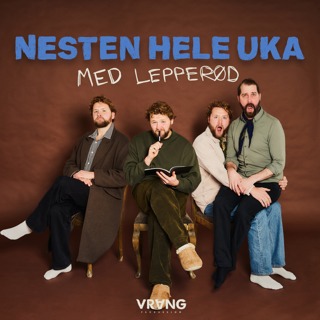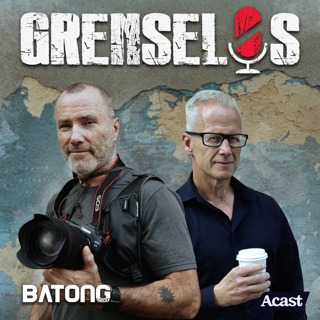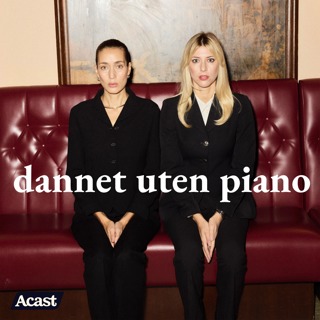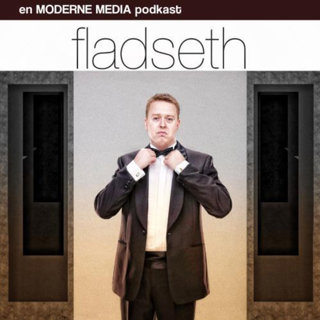
Wendy Pearlman, “We Crossed a Bridge and It Trembled: Voices from Syria” (Custom House, 2017)
In the wake of the Arab Spring and the ensuing Syrian Civil War, the stories of the millions displaced by the conflict as well as the millions Syria has lost since 2011 remain largely untold. Wendy Pearlman‘s We Crossed a Bridge and It Trembled (Custom House, 2017) attempts to fill that void. Almost entirely comprised of interviews with Syrian refugees, conducted in Arabic then painstakingly translated and organized to tell the story of the Syrian Civil War. Pearlman covers the period before the Civil War, the revolution itself and the tragic aftermath. Heartbreaking, inspiring, and informative all at once, We Crossed a Bridge and It Trembled is hopefully the first of many such compilations to tell the multifaceted Syrian story. NA Mansour is a graduate student at Princeton University’s Department of Near Eastern Studies working on the global intellectual history of the Arabic-language press. She tweets @NAMansour26 and produces another Middle-East and North Africa-related podcast: Reintroducing. Learn more about your ad choices. Visit megaphone.fm/adchoices Support our show by becoming a premium member! https://newbooksnetwork.supportingcast.fm/military-history
30 Aug 201756min

Anthony Kaldellis, “Streams of Gold, Rivers of Blood: The Rise and Fall of Byzantium, 955 A.D. to the First Crusade” (Oxford UP, 2017)
In the 10th century, a succession of Byzantine rulers reversed centuries of strategic policy by embarking on a series of campaigns that dramatically reshaped their empire. This effort and its consequences for the history of the region is the focus of Anthony Kaldellis‘s Streams of Gold, Rivers of Blood: The Rise and Fall of Byzantium, 955 A.D. to the First Crusade (Oxford University Press, 2017), which provides the first survey of this important era of Byzantine history written in over a century. Kaldellis sees the campaigns that began in the 950s as a consequence of the collapse of the Carolingian empire and the decline of the Abbasid caliphate, which provided the Byzantines with an opportunity to stabilize their southeastern frontiers and to extend and consolidate their holdings in the Balkans and in Italy. Effected through a combination of military conquest and traditional Byzantine “soft power,” the result was a greatly expanded domain, one centered now in Europe rather than in Asia. As Kaldellis explains, what brought this period to an end was not any factor internal to the empire but the simultaneous threats posed in the late 11th century by the Normans, the Pechenegs, and the Seljuk Turks, which in the end proved too much for the Byzantine state to manage successfully even with the help of the warriors of the First Crusade. Learn more about your ad choices. Visit megaphone.fm/adchoices Support our show by becoming a premium member! https://newbooksnetwork.supportingcast.fm/military-history
23 Aug 201756min

Hussein Fancy, “The Mercenary Mediterranean: Sovereignty, Religion, and Violence in the Medieval Crown of Aragon” (U of Chicago Press, 2016)
Hussein Fancy’s book The Mercenary Mediterranean: Sovereignty, Religion, and Violence in the Medieval Crown of Aragon (University of Chicago Press, 2016) begins with the description of five Muslim jenets, or cavalrymen, journeying through Spain in 1285 to serve as soldiers for the crown of Aragon. As Fancy explains, these men were not outliers, but just a few of the many thousands who were employed by successive Aragonese kings over the course of the 13th and 14th centuries, and their service challenges many of our long-held assumptions of the divide between the Christian and Islamic worlds during the Middle Ages. For the kings of Aragon, hiring jenets gave them a powerful force of light cavalry that could be used to foster their imperial ambitions, while the jenets themselves saw their service for Christian kings as fully compatible with their tradition of jihad. By describing their relationship, Fancy’s work highlights one of the many ties that linked Christian Aragon to Muslim North Africa, two regions that are usually treated separately rather than part of the interconnected Mediterranean world that emerges from his pages. Learn more about your ad choices. Visit megaphone.fm/adchoices Support our show by becoming a premium member! https://newbooksnetwork.supportingcast.fm/military-history
12 Aug 201747min

Richard Rubin, “Back Over There” (St. Martin’s Press, 2017)
The majority of the books we profile on New Books in Military History are traditional research narratives, monographs written by historians and authors seeking to present a particular campaign, organization, battle, or individual in detail. Once in a while, though, we take pride in introducing our listeners to projects that are more focused on how memory and history are intertwined, bringing the past to the present. In this episode, we speak with New York Times travel writer and amateur historian Richard Rubin about his own thoughts on the First World War and how it shaped a special relationship between many Frenchmen and the ideal of America that survives to this day. His most recent book, Back Over There: One American Time-Traveler, 100 Years Since the Great War, 500 Miles of Battle-Scarred French Countryside, and Too Many Trenches, Shells, Legends, and Ghosts to Count (St. Martins Press, 2017), is a deeply personal account of Rubin’s many walks across the Western Front and his encounters with local caretakers, fellow tourists and pilgrims, and everyday people in Belgium and France. Our discussion is more of a conversation about the state of memory and the daily encounters with history that, prior to this point, remained largely unknown to so many people. The interview, and Rubin’s book, are tactile reminders of the history that lies, quite literally, just beneath our feet . . . if we know how and where to look for it. Learn more about your ad choices. Visit megaphone.fm/adchoices Support our show by becoming a premium member! https://newbooksnetwork.supportingcast.fm/military-history
6 Aug 20171h 29min

Gerben Zaagsma, “Jewish Volunteers, the International Brigades and the Spanish Civil War” (Bloomsbury Academic, 2017)
In Jewish Volunteers, the International Brigades and the Spanish Civil War (Bloomsbury Academic, 2017), Gerben Zaagsma, Senior researcher at the centre for contemporary and digital history at the University of Luxembourg, discusses the participation of volunteers of Jewish descent in the International Brigades during the Spanish Civil War, focusing particularly on the establishment of the Naftali Botwin Company, a Jewish military unit that was created in the Polish Dombrowski Brigade. Zaagsma analyses the symbolic meaning of the participation of Jewish volunteers and the Botwin Company both during and after the civil war. He puts this participation in the broader context of Jewish involvement and Jewish/non-Jewish relations in the Left, and asks to what extent Jewishness and Jewish concerns mattered in the International Brigades and why the Botwin Company was actually created. To this end, the book examines representations of Jewish volunteers in the Parisian Yiddish press (both communist and non-communist). In addition, he analyses the various ways in which the memory of the experiences of Jewish volunteers and the Botwin Company came to be constituted and constructed after the Second World War and the Holocaust. To that end the book traces how discourses about Jewish volunteers became decisively shaped by post-Holocaust debates on Jewish responses to fascism and Nazism, analyses how, and why, volunteers of Jewish descent eventually became Jewish volunteers after the war, and discusses claims that Jewish volunteers can be seen as ‘the first Jews to resist Hitler with arms’. Max Kaiser is a PhD candidate at the University of Melbourne. He can be reached at kaiser@student.unimelb.edu.au. Learn more about your ad choices. Visit megaphone.fm/adchoices Support our show by becoming a premium member! https://newbooksnetwork.supportingcast.fm/military-history
24 Jul 201733min

Peter Eisner, “MacArthur’s Spies: The Solider, the Singer, and the Spymaster Who Defied the Japanese in WWII” (Viking, 2017)
The conquest of the Philippines in 1942 brought thousands of Americans under the control of the empire of Japan. While most of them were interned or imprisoned for the duration of the war, a remarkable few evaded capture and fought on against the Japanese. In MacArthur’s Spies: The Soldier, the Singer, and the Spymaster Who Defied the Japanese in World War II (Viking, 2017), Peter Eisner describes the efforts of three of them John Boone, Claire Phillips, and Chick Parsons to incite an insurgency against the Japanese occupation. Facing long odds, they risked their lives to undermine Japan’s control, with Claire’s Manila nightclub supplying resources and information to Boone in the nearby countryside and the intelligence passed on to Chick and other officers working towards America’s return to the Philippines. Their efforts in association with that of others provided American and Filipino guerrillas with much-needed material, and smuggled in food and supplies to thousands of prisoners of war the Japanese held on Luzon. As Eisner reveals, while their efforts aided America’s eventual reconquest of the islands, it came at personal cost to them as it did for so many others, who faced detention, torture, and even death for their actions. Learn more about your ad choices. Visit megaphone.fm/adchoices Support our show by becoming a premium member! https://newbooksnetwork.supportingcast.fm/military-history
20 Jul 20171h

Isabella Ginor and Gideon Remez, “The Soviet-Israeli War, 1967-1973: The USSR’s Intervention in the Egyptian-Israeli Conflict” (Oxford UP, 2017)
The title of Isabella Ginor and Gideon Remez‘s The Soviet-Israeli War, 1967-1973: The USSR’s Intervention in the Egyptian-Israeli Conflict (Oxford University Press/Hurst, 2017), tells you that this is a revisionist history, which argues that the Six Day War (1967) and the Yom Kippur War (1973) were not merely brief explosions of Arab-Israeli violence but part of longer sustained conflict between Israel and the Soviet Union. The role of Soviet “advisors” in Egypt in the period is well known. Using memoirs and testimony of Soviet veterans, Ginor and Remez show that the Soviet involvement was much more direct and provocative than previously understood. In addition, the authors significantly change our understanding of the eventual rapprochement between Egypt and the United States. The usual story relies heavily on the memoirs of Henry Kissinger, who naturally takes much of the credit for the supposed “expulsion” of Soviet advisors and the decision by Sadat after the war to move closer to the American camp. The problem is, as Ginor and Remez show, the advisors (and other military personnel) never left. Rather, they were shuffled around for the benefit of news people and foreign agents, then returned to their units. Crucially, these Soviet units advanced the air defense network to cover the Suez Canal– itself the prerequisite for any Egyptian attack. For these reasons and more, this book is well worth your attention. Enjoy the interview. Because this is an ongoing project, the authors are eager to collect more information. If there are veterans, diplomats, or others with some involvement in these conflicts who would be willing to share their stories, please contact Ginor and Remez at the Truman Institute: truman@savion.huji.ac.il. Learn more about your ad choices. Visit megaphone.fm/adchoices Support our show by becoming a premium member! https://newbooksnetwork.supportingcast.fm/military-history
19 Jul 201759min

Jennifer T. Roberts, “The Plague of War: Athens, Sparta, and the Struggle for Ancient Greece” (Oxford UP, 2017)
The Peloponnesian War was one of the first subjects of historical inquiry, and one that has been the subject of many works ever since Thucydides wrote his famous account of the conflict. Yet these works typically focus just on the decades when Sparta’s Peloponnesian League fought against the Athenian empire. In The Plague of War: Athens, Sparta, and the Struggle for Ancient Greece (Oxford University Press, 2017), Jennifer T. Roberts sets the war within the broader context of inter-state hostilities in 5th and 4th century Greece. As she explains, fighting between the two sides did not begin in 431, nor did it really end in 404. Instead the Peloponnesian War was just one of a series of conflicts that stretched throughout the Hellenic era, in which victories often simply set the stage for the next round of battles. Though Sparta may have defeated Athens in 404, by continuing the story beyond then Roberts shows how the new alignments that resulted transformed the city states in ways that led to Sparta’s own defeat in 371, making her triumph in the war only a fleeting one. Learn more about your ad choices. Visit megaphone.fm/adchoices Support our show by becoming a premium member! https://newbooksnetwork.supportingcast.fm/military-history
16 Jul 201756min





















